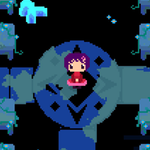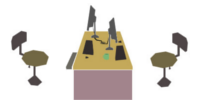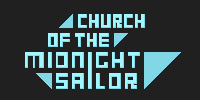Interview: Rose of Starcross’s Peyton Burnham
With gorgeous pixel art graphics and a classic console feel, Rose of Starcross has already surpassed its funding goal on Kickstarter. As a RPG that unites magic and the supernatural with anime sensibilities, it provides varied play and comfy settings to inhabit. I chatted with Peyton Burnham about the project and its lovably quirky elements that draw on deep feelings of nostalgia.
Erik Meyer: Rose of Starcross maintains a SNES look but strikes me as a stylistic melding of (dare I say) Hyper Light Drifter, Steven Universe, and a deep love of anime. When it comes to the overall visuals and the art style, what have you maintained as guiding principles?
Peyton Burnham: That’s pretty darn accurate right there! As far as principles go, I would say I just like to keep things colorful and interesting (as much as I can manage with my limited abilities)! So I like to have different visual effects, colors, and environments happening in different areas. In regards to more gameplay-related principles, I try to do my best to make sure elevation and perspective are as best communicated as they can be in areas where it’s important. That means more 45 degree angles at the edges of environments, tilesets that help mark elevation, and some points of reference. It’s difficult in 2D, but I’m doing my best!
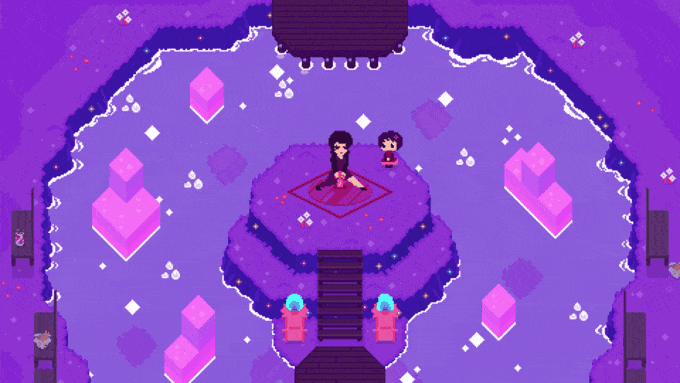
EM: In terms of backstory, an epic battle battle hundreds of years ago between powerful beings nearly destroyed the world and forever changed it; that being said, the modern-day game world feels pretty happy-go-lucky, including the Moving Fair, a resort, and Viscera’s cafe. How do you strike a balance between grim and fun, when it comes to the overall experience, and how do you pace these kinds of events?
PB: For this game and its story, it’s actually pretty easy to balance the grim and fun by just not balancing it. Not to say I’m not consciously thinking about it, I am! But without saying too much, I’ll just say that it helps the game to do it that way.
EM: The battle system feels in line with cartridge platformers but has its own flair; you’ve noted that it will change from the current version between now and launch, so what do you see as satisfying within fighting challenges, and what kinds of complexities do you find yourself embracing, as a developer?
PB: I love all types of good combat systems in games, from slow strategy to lighting fast real time action, so I’m putting a lot of work into the combat. I think forming strategies for engagements is really fun and satisfying, so I like to try and make individual enemies and enemy combinations that make you stop and think to consider your tools and how they will interact with what you’re up against. Dominating enemies can be very satisfying too! So enemies are made in a way where you can learn about them and kind of flex on them by blocking all of their attacks or beating a big group of enemies in just a turn or two. I like to embrace the more mathematical elements of battle like balancing resource usage and figuring out which abilities enemies would be weaker to, based on what you know about them. I also love the interesting decision-making like, “This guy is stupid strong, do I go ahead and get rid of him before the other guys since he’s so dangerous? Or should I clear out the other guys so I can study him, even if I might take a lot of damage?” I could talk about the combat system forever, so I’ll stop here!
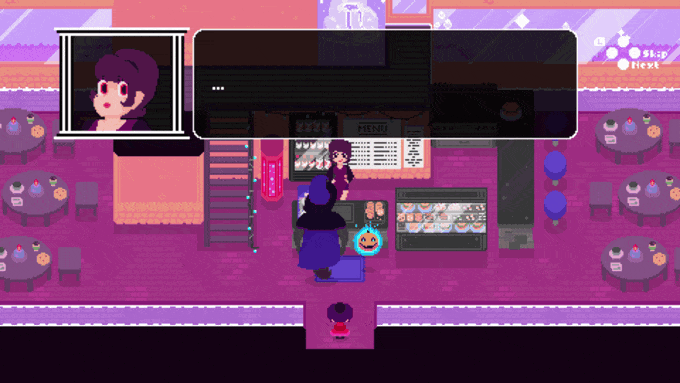
EM: As you’re doing the music, as well, I’d love to hear about that creative process. What kinds of sonic qualities go with cute scenes as opposed to battle scenes? How do you give the game an overall audio landscape feel, and in the act of composing, what sounds do you reserve as go-to loops?
PB: I’ve been doing music the longest out of everything by a long shot! It’s very important to me, so up to this point, it’s been pretty often that the music will sort of create a feedback loop where it goes something like this: I write the music, it helps me come up with a basic version of a scene, I refine the scene, I refine the music to better match the scene, maybe some new value came out of the music, repeat forever or force myself to move on! Now there have been instances of me doing music to match what’s already in the game, and the main thing involved in that process is figuring out if I want to directly match what the visuals are doing or if I kind of want to emotionally contradict what they’re doing (as a side note, the Majora’s Mask soundtrack has great examples of that stuff!) Another thing is deciding if music should be used at all or what type of atmospheric noise you might want to use for certain scenes! And as far as reserved sounds go, I try to just do whatever I think works best for the song and the atmosphere!
EM: On a style level, I see nostalgia and a passion for aesthetically-pleasing places driving a lot of locations; can you walk me through an example of this, how you begin with a location idea and slowly make it a space in which people will want to spend time?
PB: This one is easy! I just pick places that I love for one reason or another, whether it’s a videogame location I love to see or it’s a place I love to see in real life! I can’t really walk you through a good one right now to avoid spoiling anything too much, but I can say I think an important thing in making places that people want to look around and be in is giving it some love and a sense of history. Not necessarily just through text and dialogue but doing it in a way feels like, “This makes sense that this is how this area would be if people have been living here,” or, “oh, I get why this place would have been built this way,” or something similar to that!
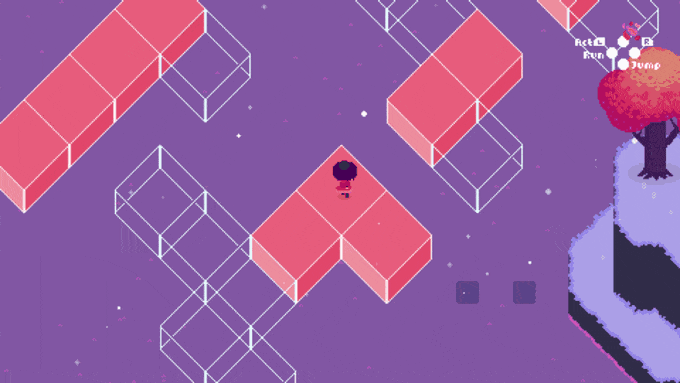
EM: Your Kickstarter campaign has already surpassed its goal, so congrats are in order! I generally feel like crowdfunding is its own beast, so what has that process been like, and what have you learned from previous campaigns? How do you see the landscape of indie funding changing?
PB: Thank you very much! And it very much is its own beast; the process has not been fun! As a pretty anxious person and a solo developer, managing everything can be a little painful and pretty difficult. It basically just means I’m constantly sending emails that won’t ever get responses, checking and updating different social medias and platforms as much as I can manage, updating the demo if I need to, engaging with people on all of the different platforms, and a ton of other stuff all while not being able to get any actual work done on the game. Not to mention massive guilt if you spend any time not doing that stuff. But the people who have supported me are all really positive and cool, so I’ll take it! That all happens to be what I learned from my last campaign, too! You HAVE to do that stuff if you want everything to work out! You have to show your game whenever you can and do stuff like flood tweets with obnoxious hashtags. You have to ACTUALLY USE social media and the platforms available to you.
No matter how much I really do not like doing most of that stuff, it’s crazy that you can get your art essentially independently funded with stuff like Kickstarter – just meaning you don’t have to answer to anyone; the people who fund your game are funding YOUR game and they want you to make it that way! I think it’s always getting better and worse, too. There are a lot of indie games being made. The market is preeeeetty saturated in terms of getting attention from people, but that also means that more and more people are aware of crowdfunding and accept it as a genuine way to fund a game! And that’s awesome!
EM: You’re including a demo on the Kickstarter page, which gives a taste to prospective backers. How important do you feel demos are, in the current game climate, and beyond a showcase for play experience, what kinds of takeaways felt important to showcase?,
PB: I think they’re important! The single defining feature that makes a game a game is the fact that it’s interactive in some way or another. So in my mind, people should be able to judge the potential of that interactivity for themselves! People aren’t idiots, though; most game-playing audiences can look at footage or GIFs and get a feel for it. So it’s not the most important thing, especially considering sometimes it’s hard for people to see past things like placeholder assets and rough edges. But for my game in particular, it was really important because I didn’t want people to think that it was a bare-bones generic JRPG that completely depended on its story to be interesting. I really wanted to communicate that the interactive part of my game was something I cared about just as much as the story, the art, the music, and whatever else. Also, this is my first real game! It’s pretty important that people can see that I actually know how to make one!
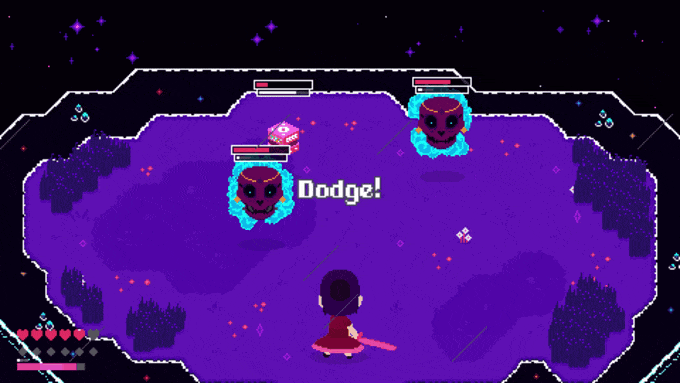
EM: The game uses perspective in various ways, moving from a largely top-down view to scenes that scroll sideways, along with battle scenes that bring the viewer much closer to the action. As you stitch together these different aspects of the overall game, what kinds of shifts in orientation aid storytelling, and what big developer visual decisions drive big player moments?
PB: The “hallway” and vista scenes are really just to show the world in a bigger way and maybe help build up an emotion! This is pretty age-old, the first game I really played was Castlevania 1, and the opening scenes of that game do this build-up in a great way, and that game was from 1986! (I’m a good bit younger than that but I still felt it as a kid!) The close-up battle view is kind of a two birds with one stone thing where having the player and enemies appear larger can help the player read the enemy animations, but it also can help you connect with some moments onscreen! You’re there in the midst of everything instead of observing from a large pulled-out view. There are two introductions to characters that happen in the demo with the zoomed-in view that I think wouldn’t have been as effective if they happened in the normal overworld view, so I’m planning on using it when appropriate!
In case you missed it, here’s the trailer:

